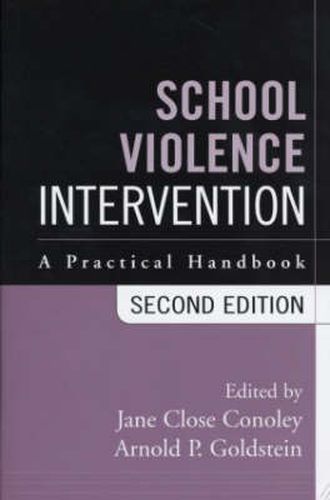Readings Newsletter
Become a Readings Member to make your shopping experience even easier.
Sign in or sign up for free!
You’re not far away from qualifying for FREE standard shipping within Australia
You’ve qualified for FREE standard shipping within Australia
The cart is loading…






School violence is a serious and growing problem, and one for which no quick-fix solutions exist. Yet promising interventions are available to help school-based professionals reduce the risks of student aggression and respond appropriately when violence occurs. Now in a revised and updated second edition, this important volume synthesizes the breadth of current knowledge and presents guidelines for multimodal intervention at the student, school, and system levels. Leading practitioners and educational researchers describe evidence-based programs that have been used in a wide array of settings and situations, enabling readers to make informed decisions about the strategies that would be most effective in their own environments. Following an introductory chapter summarizing the latest data on the nature and incidence of youth violence, experienced educators share their perspectives on creating low-aggression classrooms and promoting pro-social behaviour in the schools. Chapters then present intervention models that address a range of specific risk factors for violence and that draw on the collaborative efforts of school-based mental health practitioners, teachers, administrators, law
$9.00 standard shipping within Australia
FREE standard shipping within Australia for orders over $100.00
Express & International shipping calculated at checkout
School violence is a serious and growing problem, and one for which no quick-fix solutions exist. Yet promising interventions are available to help school-based professionals reduce the risks of student aggression and respond appropriately when violence occurs. Now in a revised and updated second edition, this important volume synthesizes the breadth of current knowledge and presents guidelines for multimodal intervention at the student, school, and system levels. Leading practitioners and educational researchers describe evidence-based programs that have been used in a wide array of settings and situations, enabling readers to make informed decisions about the strategies that would be most effective in their own environments. Following an introductory chapter summarizing the latest data on the nature and incidence of youth violence, experienced educators share their perspectives on creating low-aggression classrooms and promoting pro-social behaviour in the schools. Chapters then present intervention models that address a range of specific risk factors for violence and that draw on the collaborative efforts of school-based mental health practitioners, teachers, administrators, law